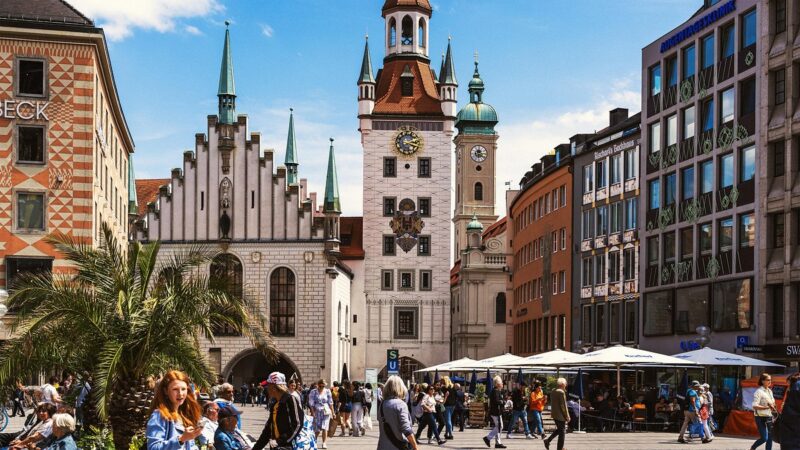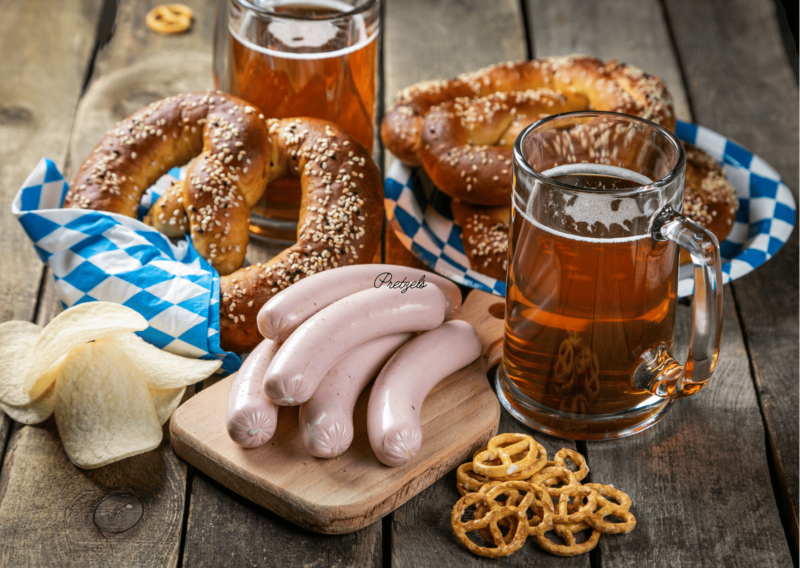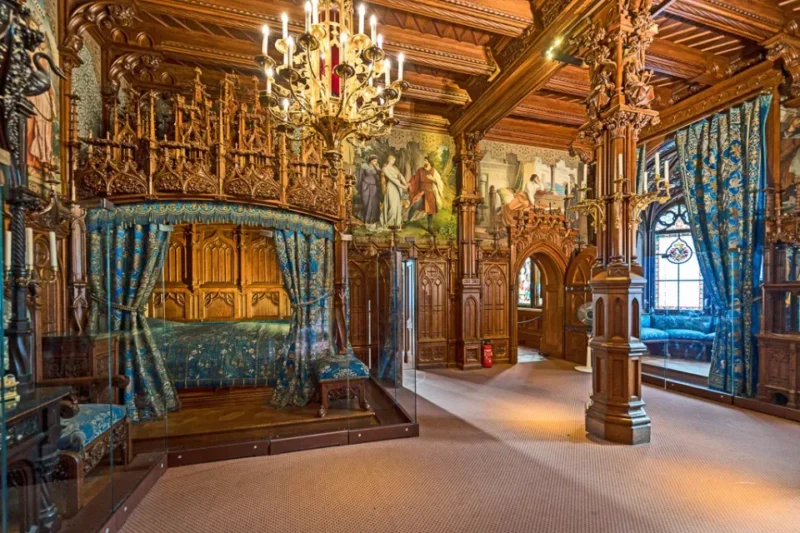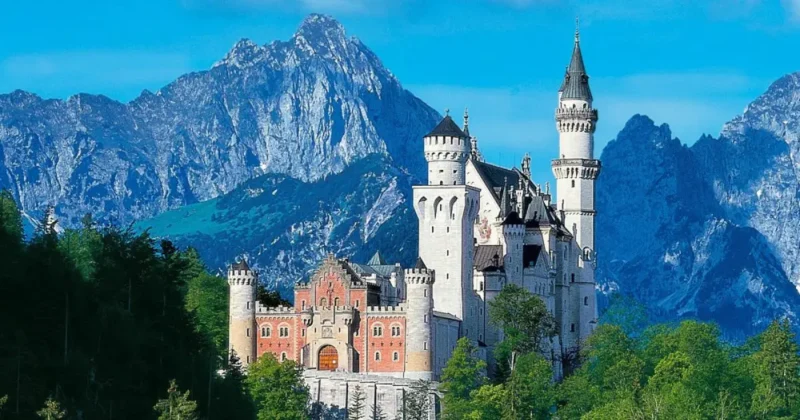Munich stands as the gateway to Bavaria’s most captivating landscapes. The city’s cultural wealth, elegant architecture, and energetic rhythm form the ideal foundation for any exploration through southern Germany. A journey that begins in Munich and leads to Neuschwanstein Castle offers one of the most rewarding travel experiences in Europe.
If you are traveling alone, Louisa can make the day far more engaging. A quiet drive through the countryside becomes lighter with good company, and the trip gains a personal touch that enriches every view along the way.
Neuschwanstein rises above the village of Hohenschwangau, surrounded by forests, lakes, and cliffs. Its towers and white walls give the feeling of walking through a fairytale. Munich’s sophistication meets mountain charm when both destinations are combined into one plan, creating a seamless blend of culture and nature.
How to Plan the Journey

A successful visit depends on clear timing. The castle lies about 120 kilometers southwest of Munich, close to the Austrian border. A single day offers enough time for both travel and sightseeing if you start early.
Morning hours in Munich should be used efficiently. Have breakfast near the main station or at a café close to Marienplatz, then prepare for departure by nine. Trains to Füssen depart regularly, and the regional Bayern Ticket gives unlimited travel on the route. Upon arrival in Füssen, bus number 78 continues to the village of Hohenschwangau. The total travel time is roughly two and a half hours.
Some visitors prefer to drive. The route along the A96 and B17 is simple, with picturesque scenery the entire way. Parking in Hohenschwangau can be limited, so an early start remains important. Guided tours often combine transport and entrance tickets, simplifying logistics for those who prefer less coordination.
Best Way to Structure the Day
Begin with a short morning stroll through Munich before leaving. A quick visit to Viktualienmarkt or a glimpse of the Residenz offers a brief cultural taste before heading toward the Alps. Leaving by late morning allows enough time to reach Neuschwanstein by early afternoon.
Upon arrival, tickets can be collected from the official center at the base of the hill. A walk uphill to the castle takes about thirty minutes, but shuttles and horse carriages are also available. Once at the top, views across the valley and toward Alpsee Lake feel like a living painting.
Inside tours are guided and last about half an hour. The interior rooms display King Ludwig II’s fascination with myths, theater, and architecture. Each wall, chandelier, and painted ceiling tells part of the story that turned his vision into reality.
After the tour, walk to Marienbrücke, a small bridge behind the castle that offers the most famous viewpoint in Bavaria. The sight of Neuschwanstein framed by forest and waterfall gives every visitor a sense of awe that photographs rarely capture.
Returning to Munich or Staying Overnight
The decision depends on energy and interest. Returning to Munich the same evening keeps the schedule tight but convenient. The last direct train from Füssen reaches Munich by late evening. Those who prefer to slow the pace can stay overnight in Füssen or Schwangau. Both towns offer charming inns and quiet surroundings with excellent views of the Alps.
Staying overnight allows an early morning return to Marienbrücke before the crowds arrive. Morning mist often settles over the valley, giving the castle an ethereal atmosphere that few day-trippers ever witness.
Additional Attractions Around the Castle
Hohenschwangau Castle stands near Neuschwanstein and predates it by several decades. King Ludwig spent much of his youth there, and it influenced his later architectural ideas. The ticket office sells combined entry passes for both castles.
The Alpsee Lake lies below the two castles and has a walking path along its edge. A short hike provides calm scenery and ideal spots for quiet reflection or photography. Cafés near the shore serve coffee and regional pastries, making it an inviting rest stop before heading back.
Füssen’s old town also deserves mention. Its narrow streets, colorful buildings, and medieval walls create a relaxed ending to the day. The town’s Museum of Füssen houses musical instruments and artworks that provide deeper insight into Bavarian traditions.
Why the Combination Works So Well
Munich offers structure, variety, and accessibility. Neuschwanstein offers contrast, beauty, and imagination. The two destinations complement each other perfectly. One day gives urban vibrancy, the next delivers mountain serenity. For many travelers, the combination captures the best of Bavaria without extending the stay too far or demanding complex arrangements.
The castle’s distance allows a scenic drive through rolling countryside, passing lakes, fields, and mountain edges. The gradual change in landscape mirrors the transition from city to storybook world. Travelers who enjoy photography, history, and architecture find constant inspiration in both destinations.
Munich itself provides context for Ludwig II’s ambitions. Visits to the Munich Residenz or Nymphenburg Palace reveal his royal lineage and the opulent traditions that shaped his artistic vision. Seeing those sites before visiting Neuschwanstein helps connect the grandeur of the capital with the solitude of the king’s mountain retreat.
What to Eat and Drink on the Route

A proper Bavarian breakfast before departure keeps energy high. Many cafés near Munich Hauptbahnhof offer pretzels, cold cuts, and strong coffee. For lunch near Neuschwanstein, try Gasthof Müller or Alpenstuben in Hohenschwangau for regional dishes such as schnitzel, käsespätzle, or roast pork.
Those who return to Munich by evening can enjoy dinner at Augustiner Bräustuben or Hofbräuhaus. Bavarian beer halls provide the authentic experience, where travelers mix with locals over hearty plates and fresh brews.
Seasonal Considerations
Neuschwanstein changes character with each season. Summer brings green valleys and long daylight, but crowds are large. Spring and autumn provide milder weather and fewer visitors. Winter offers magic of its own, with snow-covered trees and silent surroundings that heighten the fairytale mood.
Tickets remain limited year-round, so booking in advance through the official website or through a guided tour remains wise. Opening hours vary slightly with the season, and weather can influence access to Marienbrücke during icy conditions.
Photography and Practical Tips

Photography inside the castle is restricted, but the exterior and nearby viewpoints more than compensate. For the best light, arrive in early afternoon when the sun illuminates the façade from the west. Sunset photography works well near Alpsee Lake or the fields below the castle.
Wear comfortable shoes for the hill walk. Carry a small bottle of water, and dress in layers because mountain air can shift quickly even in summer. Bring cash for parking or small purchases since not all local cafés accept cards.
Cultural Context: King Ludwig II and His Vision
King Ludwig II of Bavaria, known as the “Fairy-Tale King,” ruled during a time of political pressure and personal retreat. His fascination with medieval chivalry, mythology, and opera led him to create Neuschwanstein as a private world far removed from politics.
He saw architecture as art and isolation as peace. Neuschwanstein was never completed, but what stands today embodies the romantic ideals that shaped his mind. Each room reflects themes drawn from legends and literature, designed not for practicality but for imagination.
Visiting Neuschwanstein allows travelers to step into that vision. The blend of natural landscape and artistic fantasy represents a cultural expression unique to Bavaria’s history. The contrast with Munich’s grand palaces and civic life makes the trip even more meaningful.
Extending the Experience Beyond the Castle
After exploring Neuschwanstein, many travelers expand the journey into nearby destinations. The Wieskirche, a UNESCO World Heritage Site, lies about 20 kilometers away and represents late Baroque architecture at its finest.
The town of Oberammergau, famous for its Passion Play and woodcarving tradition, sits along the same route and offers another glimpse into Bavarian craftsmanship. Garmisch-Partenkirchen, farther south, introduces dramatic mountain scenery and opportunities for hiking or cable-car rides to the Zugspitze summit.
Each location connects naturally to Munich, allowing you to shape a broader route across Bavaria without losing comfort or coherence.
Suggested Two-Day Itinerary Example
Day One
- Morning: Explore Munich’s Old Town, visit Marienplatz and Viktualienmarkt.
- Afternoon: Tour Nymphenburg Palace or the BMW Museum.
- Evening: Enjoy dinner at a traditional beer hall and rest before the castle trip.
Day Two
- Early Morning: Depart Munich around 8 a.m. for Füssen.
- Late Morning: Arrive in Hohenschwangau and pick up tickets.
- Midday: Tour Neuschwanstein Castle and walk to Marienbrücke.
- Afternoon: Visit Hohenschwangau Castle or stroll around Alpsee.
- Evening: Return to Munich or stay overnight in Füssen.
Why the Journey Leaves a Lasting Impression
A visit to Munich alone satisfies any traveler with culture and comfort, but adding Neuschwanstein transforms the trip into something deeper. The shift from city streets to mountain slopes mirrors a transition between reality and imagination. You begin the day surrounded by architecture shaped by centuries of royal power and end it looking at a castle born purely from a dream.

